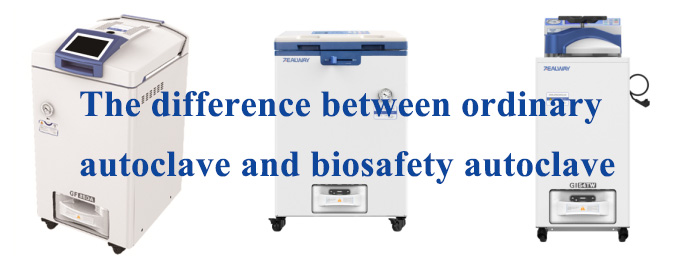
Autoclaves are instruments with high usage rates in laboratories. Even experienced laboratory technicians can get accustomed to some incorrect operations, which may lead to equipment malfunctions. Neglecting some essential steps often results in more losses than gains. So, what operations should not be performed? And what details need attention?
1.Overloading and overcrowding the sterilization chamber:
Consequence: Difficulties in air removal and steam penetration into the sterilization packages, which is unfavorable for steam permeation.
Measures: Sterilized items must be placed in the basket and not exceed the height of the basket. Items should be arranged properly with gaps left between them to facilitate steam penetration. A gap must be left at the position of the safety valve’s exhaust port to ensure unobstructed steam release, preventing the chamber from bursting due to failure to relieve pressure caused by a blocked exhaust valve.
2.Placing breathing bags flat on the sterilization chamber shelf or stacking them together:
Consequence: When steam penetrates the breathing bags and comes into contact with the surface of the items, condensate will naturally form. The more items there are, the more condensate will be produced, so that the conventional drying time cannot achieve a good drying effect.
Measures: Breathing bags should be left with sufficient gaps and placed vertically on the shelf to prevent the accumulation of condensate inside the breathing bags.
3.Closing the ventilation valve of rigid containers, tightly sealing empty glass bottles with threaded lids, or sealing them with aluminum foil:
Consequence: Sterilization cannot be performed because steam cannot directly contact the inner surface.
Measures: This can be solved by ensuring that there are channels for steam to enter and air to exit in the items in the sterilization chamber. If it is uncertain whether the configuration, setting, packaging, or orientation of the items allows sufficient steam penetration, item thermometers, chemical, or biological indicators can be placed inside the items to confirm.
4.Sterilizing different types of items simultaneously:
Consequence: It leads to neglecting one aspect while attending to another, failing to achieve a good sterilization effect.
Measures: Select the corresponding program for sterilizing different types of items.
5.Placing sterilized items arbitrarily after sterilization:
Consequence: Resulting in contamination from the external environment.
Measures: Take out the sterilized items after they are dried, mark the sterilization date, store them in a sterile cabinet, keep proper records, and re-sterilize them if they have been stored for more than one week.
6.Placing liquid in vented containers in deep trays to collect boiling and overflowing liquid:
Consequence: Air will be trapped at the bottom of the deep tray, blocking steam penetration and preventing it from contacting the surface, thus failing to achieve the sterilization effect.
Measures: Remove the tray, do not manually exhaust air by yourself to prevent boiling and overflow, and use shallow trays or stainless steel baskets instead.
7.Manually releasing steam to reduce pressure and temperature during liquid sterilization:
Consequence: Liquid may boil violently and splash, which is likely to cause safety accidents.
Measures: It is strictly forbidden to manually release steam to reduce pressure and temperature for liquid materials. The liquid can only be taken out after the autoclave has naturally reduced pressure and temperature to prevent violent boiling and splashing of the liquid.
8.Failure to maintain the sterilizer regularly:
Consequence: It may cause pipe blockage or deposits on the heating tube, reducing the service life of the heating tube or causing corrosion of the chamber.
Measures: Gently wipe the outer surface of the instrument with a soft cloth. For stubborn stains, use a small amount of neutral detergent for cleaning, then dry it with a cloth. Clean the sterilization chamber regularly to remove scale and debris. When the sterilizer is not in use for a long time, drain all the water in the sterilization chamber.








ZEALWAY provides quality autoclaves, full services and professional sterilization solutions for you.
Leave a Reply